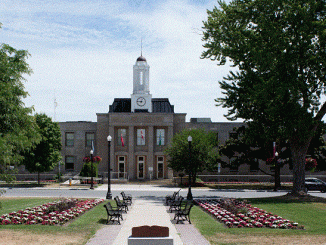
Peterborough, the so-called “Electric City,” has spent the last half-decade proving it believes in power — not just electricity, but concrete, steel, and, apparently, enough courts to keep a whole city bouncing. Council has invested upwards of $110 million into sports infrastructure, including the Peterborough Sport & Wellness Centre, the Peterborough Memorial Centre, the new Miskin Law Community Complex, and upgrades across city arenas and recreation facilities. That money keeps hockey rinks cold, swimming pools open, pickleball courts bouncing, and fitness studios buzzing.
The question is always the same: return on investment.
Sports facilities generate measurable revenue. The PSWC brought in $2.8 million in operating revenue in 2022 but ran a net operating deficit of $1.4 million, while the Memorial Centre brought in $1.4 million but ran a $1.1 million deficit. These facilities do more than balance sheets suggest: they host hockey, swimming, pickleball, fitness classes, youth programs, and even community meetings. Attendance and memberships show steady engagement. The Peterborough Petes alone drew 119,747 fans over 34 home games in 2023–24, proving that arenas still matter.
Yet for all that ice, steel, and bouncing balls, it’s the arts that quietly sustain the city’s identity. Peterborough Musicfest generates $4.3 million annually for the region, while the Art Gallery of Peterborough runs a small surplus on revenues under $1 million. Unlike sports, cultural activity doesn’t just move bodies — it moves minds. Exhibitions, performances, festivals, and workshops nurture creativity, provide spaces for dialogue, and anchor community identity.
Cultural impact is harder to measure than ticket sales or court rentals, but its effects are profound. Visitors attend galleries, concerts, and festivals, spending at restaurants, shops, and hotels. Students and young residents gain exposure to music, theatre, and visual arts. Unlike arena-based activities, which often require a membership or equipment, arts experiences can be inclusive and accessible, extending beyond the physicality of a sport to foster imagination and critical thought.
The social math is tricky. In a city where hockey and recreation are cultural cornerstones and winter is a test of endurance, no one wants to be the councillor saying, “Maybe we’ve built enough rinks?” Funding for arts, meanwhile, is politically safer — but its contributions are quieter, subtler, and longer-lasting.
Financially, the imbalance is stark. Sports facilities operate at deficits yet justify multi-million-dollar capital spending, while arts organizations deliver significant economic and cultural returns on comparatively modest budgets. It’s arenas and courts versus galleries and stages — the body versus the mind, the immediate spectacle versus enduring meaning.
In short, sports facilities keep the city moving, but arts and culture keep it thinking, feeling, and growing. Without the latter, Peterborough risks being a city of activity but not of character: busy, energetic, but lacking soul. Perhaps it’s time council asks whether investment should be measured solely in square footage and court hours, or also in imagination, culture, and civic pride.
Until then, the pickleball paddles will keep bouncing, Zambonis will keep rolling, and the Musicfest and gallery shows will quietly remind us that the real return on investment isn’t always on the scoreboard. Bread, circuses, and courts — Peterborough-style — are alive and well. But the culture? That’s where the lasting impact lives.



